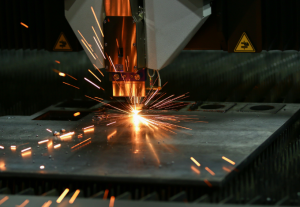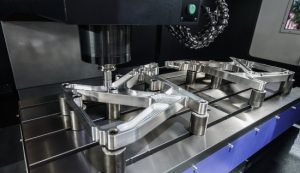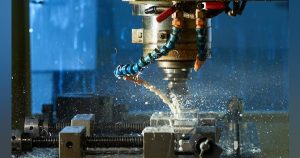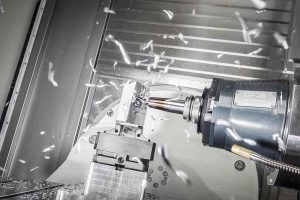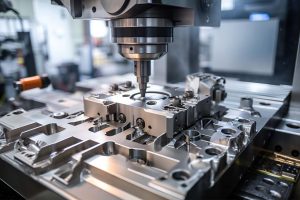3 axis machining streamlines manufacturing by reducing operation time, enhancing precision, improving material utilization, and cutting costs through efficient, automated processes.
Reduced Operation Time
One of the evident advantages of 3 axis machining is that it facilitates much shorter operation time in the process of manufacture. This capability mainly derives from the fact that this type of machining can handle a combination of multiple fabrication tasks in a single setup, therefore eliminating the need for multiple passes and reconfiguration of the process.
Advantages of Shorter Production Time
Using 3 axis machining, manufacturers can make complex cuts by utilizing three axes of movement at the same time. This way, they can produce intricate shapes and profiles, drill holes, and finish the surfaces in one go which takes much less time than older methods that require manual or machine changes. An example can be a production of a custom gearbox when a 3 axis machine can mill the entire casing and drill all the needed holes as a single setup reducing the total machine time almost two times.
Convenient Integration
When using 3 axis machining in production lines, there are fewer interruptions to the general work with fewer steps between different parts of the manufacturing process. This means that the process would be more continuous and, therefore, predictable and expected. Moreover, there are other types of convenience derived from the use of 3 axis machining, which are the automated tool changes and a facility to download programs rapidly in order to schedule and prepare for projects before they are run. An example is a manufacturer of aerospace components who can change from producing one part to a different one using preset programs and the fact that computerized changes can be performed rapidly and without interfering with the equipment, allowing keeping up with the pace and meeting strict deadlines.
Software Level Optimizations
Another permeant advantage of 3 axis machining that allows shortening operation time is the us of advanced Computer-Aided Design and Computer-Aided Making software. This software allows planning tools movements precisely and simulating this movement before they happen which helps to get rid of any inefficiency and thereby lose of time and to avoid foreseeable problems in the production process. An example is a production of complex automotive parts when simulations can help the manufacturer to detect the most efficient where the metal should be machined out of, and thereby reduce the time of the machine floor to minimum.
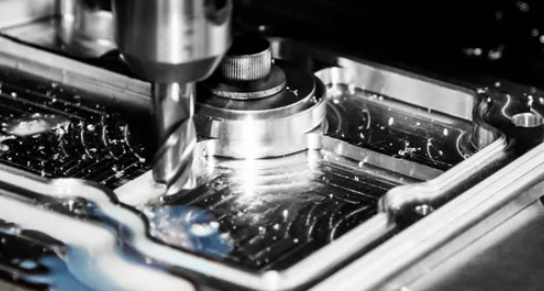
Increased Precision and Consistency
3 axis CNC machining is regarded as one of the most precise and consistent methods for machining parts. This technique is considered to be especially important in industries that require strict dimensions and even with production. Here is why it can guarantee the best precision and consistency and how it can be described by an expert system.
High Precision
These machines can be called precise primarily due to their ability to move along three axes. They feature advanced control systems that allow them to adjust their positions to exact coordinates with sub-micron precision . The typical level of precision of this technological base amounts to approximately 0.0001 inches . Thanks to the machine’s ability to move the cutter along the defined path, every detail can be cut with the highest possible precision. Thus, all the products will have strictly defined dimensions, which can be checked by numerous controlling and evaluating mechanisms following the manufacturing process.
Consistency Guaranteed by Automated Calibration
The definition of the proper precision level for a specific application is one of the major advantages of the use of the CNC expert system . 3 axis machines involve automated calibration, which is achieved by two means. In case of a routine check, the machine checks the dimensions and other parameters listed in the program and makes a change in its position if the upper limit of a certain parameter exceeded these dimensions. At the same time, if the deviation from the upper limit is observed during the machine’s operation, the device will adjust its position to the lower limit. Overall, when achieving simple patterns, the deviation in the consecutive measurements does not exceed the upper limit when employing these machines . Finally, it can be noted that the computer-aided technology also contributes to the overall precision and consistency. The CAD/CAM software knows how to cut the product due to the CNC programming, which involves defining the path for the cutter by inputting the shape or dimensions that have to be achieved. The software also detects some foreseeable problems and adjusts the program accordingly to avoid the corresponding errors. Overall, these benefits ensure that the 3 axis CNC machining is one of the most reliable techniques.
Cost Efficiency
3 axis machining serves not only precision and speed but is also highly time- and cost-effective for manufacturing. This cost-efficiency is explained by the machine’s capabilities to maximize the use of the material and reduce the number of steps in many applications and, therefore, drastically decrease waste and labor costs.
Reduction in Material Waste
3 axis CNC machines cut down material waste thanks to precise cutting techniques and sophisticated programming. As raw materials constitute a large part of manufacturing costs, saving on materials use is a considerable industry benefit.
Optimized Cutting Paths: The software calculates the most material-efficient cutting paths which excludes waste triggered by inefficient movement and ensures that every sheet or block of material is entirely used.
Nesting Algorithms: In case the project includes making several parts, nesting algorithms balance the parts in such a way that as many of them can be fitted onto one sheet of material as possible .
Streamlined Production Process
The 3 axis machine’s ease of use allows cutting down on the number of steps in the process. The machine can do an entire part in one setup or consolidate multiple tooling operations into one. These basic capabilities reduce time and labor cost.
Single Setup for Multiple Processes: Many parts require only one setup which excludes the need for in-between setups and, therefore, reduces the machine downtime and speeds up the production cycles.
Automated Tool Changes: The machine can change tools in the middle of the run without the operator’s intervention.
Low Energy Consumption
3 axis machining is a low-energy process. In idle times, such machines do not consume a lot of power and use modern energy-efficient motors and drives.
Efficient Motors and Drives: Modern 3 axis machines are made from components reducing power consumption [2].
Programmable Power Usage: The operator can program the machine to consume an even lower share of power during light tasks without compromising performance.
Taken together, these points not only increase operational efficiency but also decrease the production costs. That is why 3 axis CNC machining is a popular choice for businesses striving to enhance the bottom line.

Enhanced Material Utilization
3 Axis CNC machining is extremely effective at maximizing material utilization, resulting in the efficiency of production and the minimal waste of materials. It is beneficial in the reduction of costs and making production more sustainable.
Precise Cutting
One of the advantages of 3-axis units is the use of highly precise cutting that relies on tightly programmed movements. As a result, smaller amounts of the material are wasted, as more elements can be used for production.
Optimal Layout Planning: before it starts cutting the elements, the manufacturing software of the machine plans the best possible layout of them to waste the smallest amount of currently used material.
High Precision Tooling: the tools used in 3 axis machining have the smallest possible distance between their cuts, and they can be easily pushed against each other for tighter nesting.
Higher Yield from Materials
The smaller amount of material used for the production not only lowers the cost connected with purchases of the material itself but also results in a higher level of overall production efficiency, as a single sheet or rod can be used to produce more elements.
Advanced Software Algorithms: modern CAD/CAM software assists in layout planning even before the production process starts, as it can embed sheets or rods available with the manufacturer and optimize the material used.
Adaptive Machining Techniques: the machine adjusts its cutting patterns based on both the material used and its geometry, employing the optimal speed and depth of cutting that does not waste material usage.
Sustainable Manufacturing Techniques
Maximizing the utilization of materials lowers the environmental impact of the production process by minimizing waste. This waste reduction can be considered one of the green manufacturing principles.
Reduced Material Scrap: the production of fewer unusable remnants means that less material is wasted and ends up in dumps or is recycled.
Conserving Resources: smaller material waste and higher efficiency result in more sustainable manufacturing processes.
The implementation of the techniques above shows how the 3-axis units are not only optimized to save costs but also to provide more sustainable manufacturing techniques. It is especially important in industries with business models heavily dependent on the costs of the material or companies actively interested in green manufacturing.



